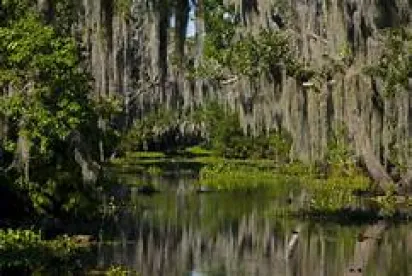In a closely-watched decision, the United States Supreme Court substantially narrowed the United States Environmental Protection Agency’s authority to regulate non-traditional wetlands as "waters of the United States" under the Clean Water Act.
On May 25, 2023, in Sackett v. Environmental Protection Agency, the Supreme Court held that "waters of the United States" only include "wetlands with a continuous surface connection to bodies that are 'waters of the United States' in their own right, so that they are 'indistinguishable' from those waters." Although the reasoning of the justices differed, the Supreme Court was unanimous in deciding that the wetlands on Sackett’s property are “distinguishable” from those waters that are lawfully regulated by the Clean Water Act.
"Waters of the United States" are not defined in the Clean Water Act and the regulations bestow authority on the U.S. Department of the Army to define its meaning. Over the past few decades, substantial controversy and litigation have resulted from competing definitions promulgated by administrations that expand or contract the definition to include or exclude features such as intermittent streams, wholly-isolated wetlands or even ditches. Because filling wetlands under federal jurisdiction is prohibited without a Section 404 permit under the Clean Water Act, the scope of federal authority to regulate such features can have profound impacts on the cost or feasibility of land development.
In 2007, the Sacketts purchased land near Priest Lake, Idaho to build a home. After obtaining building permits, the Sacketts began grading the site and filling the onsite wetlands. The USEPA notified the Sacketts that filling the wetlands on their property without a permit violated the Clean Water Act, as those wetlands are "waters of the United States" and USEPA ordered a full restoration of filled wetlands. The agency reasoned that the wetlands on the Sackett property were "waters of the United States" because they drained through a ditch that feeds a creek that ultimately feeds into Priest Lake. The Sackets sued the USEPA alleging the affected areas on their property were not "wetlands" subject to EPA authority under the Clean Water Act. The Ninth Circuit applied the "significant nexus" test outlined by Justice Anthony Kennedy in Rapanos v. United States and ruled in favor of the USEPA. Sackett appealed to the US Supreme Court.
Justice Samuel Alito, writing for a majority of the Court, determined that the "significant nexus" test, and ultimately the USEPA's current interpretation of "waters of the United States," are inconsistent with the plain language of the CWA. He wrote that the act only addresses "wetlands with a continuous surface connection" with navigable water, as there is "no clear demarcation between 'waters' and wetlands." The Court acknowledged CWA jurisdiction extends to waters that may have "temporary interruptions in surface connection" due to low tides or dry weather. Although a wetland separated by a direct barrier from a "water of the United States" would not be subject to the CWA, a landowner cannot defeat jurisdiction by constructing a barrier on a wetland that would otherwise be subject to the CWA. Justices Brett Kavanaugh, Sonia Sotomayor, Elena Kagan and Ketanji Brown Jackson wrote that they agreed with the outcome, albeit on narrower grounds. Justices Clarence Thomas and Neil Gorsuch agreed with the test outlined by Justice Alito but would have gone further in limiting the USEPA authority.
Although the Court has narrowed the test from those wetlands with a "significant nexus" to a navigable water to those with a "continuous surface connection" to a navigable water, this decision does not impact local or state regulations on wetlands that do not have a continuous surface connection.






 />i
/>i
